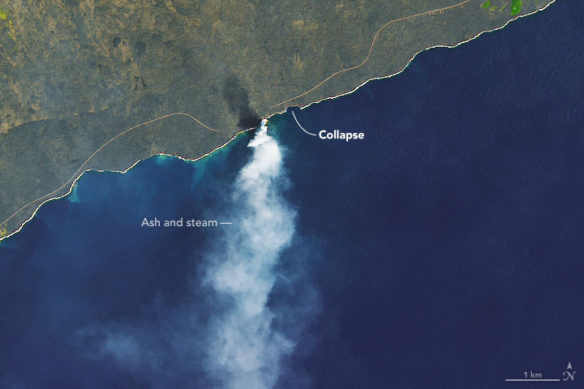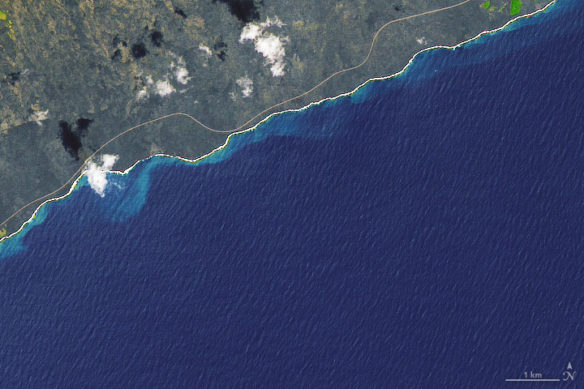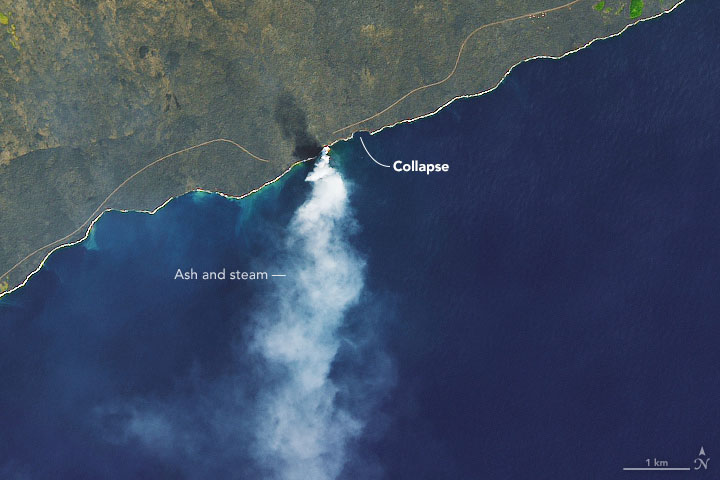
On January 3, 2017, the Operational Land Imager (OLI) on Landsat 8 captured an image showing the aftermath of the collapse.
By Adam Voiland, NASA / Earth Observatory;
Around 2:45 p.m. local time on December 31, 2016, unstable volcanic terrain began to tumble into the sea at Kamokuna, an area where lava from Hawaii’s Kilauea volcano pours into the sea. Fiery explosions, large waves, and a towering plume of steam and ash sprang forth as the lava delta and older nearby sea cliffs crumbled away.
Lava deltas are fan-shaped patches of new land that form along coasts when lava flows directly into the ocean. When they are built on steep marine slopes, they can easily collapse.
On January 3, 2017, the Operational Land Imager (OLI) on Landsat 8 captured an image showing the aftermath of the collapse.(see above). For comparison, this second image (below) shows the same area on October 13, 2015. Almost all of the Kamokuna lava delta is now gone.

For comparison, this second image shows the same area on October 13, 2015. Almost all of the Kamokuna lava delta is now gone.
The collapsed portion of the sea cliff extended about 180 meters (590 feet) east of the delta edge, and cut inland about 70 meters (230 feet) from the shoreline. (The U.S. Geological Survey has posted a detailed map showing both of these areas.) In the 2017 image, a plume of steam and volcanic gases is rising from waters west of the collapse, in an area where lava continues to flow into the sea.
The event brought a brush with death for five onlookers who violated park ranger warnings and were nearly swept away by the collapsing sea cliff. With so much cliff gone, the National Park Service has opened a new viewing location at a safer distance.
Original Article, NASA/Earth Observatory (01-07-2017)
New lava viewing area opens in Hawaii, days after large lava delta collapse; CBS News (01-04-2017)
Kilauea’s Lava Pours Into the Pacific; NASA – Earth Observatory (11-20-2016)
The Pu‘u ‘Ō‘ō eruption of Kilauea, the most active volcano in the Hawaiian island chain, has been going on almost continuously for more than three decades. The location and intensity of lava flows have varied over the years…









